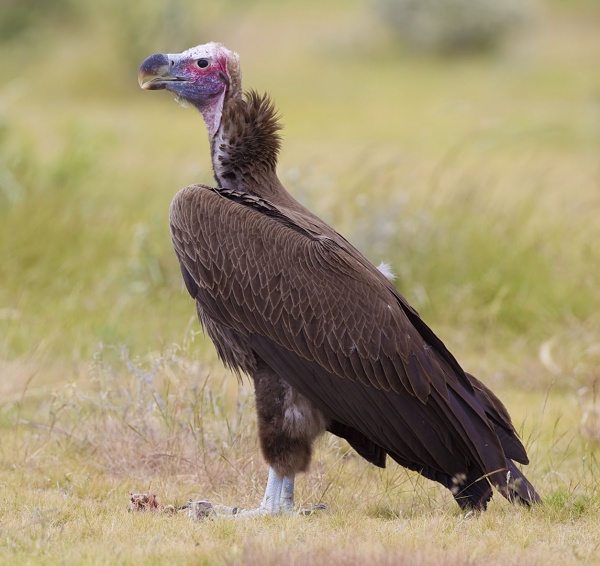Facts About Lappet-faced vulture
The lappet-faced vulture, also known as the Nubian vulture, is a remarkable bird native to Africa and parts of the Arabian Peninsula. Unlike New World vultures, this Old World vulture belongs to the Accipitriformes order and is the sole member of the genus Torgos. These impressive birds can be observed in various habitats, such as dry savannahs, deserts with scattered trees, and open mountain slopes.
What sets the lappet-faced vulture apart is its size. It is the longest and largest-winged vulture in its range, measuring 95–115 cm in length and boasting a wingspan of 2.5–2.9 meters. Identifiable by its bald head and striking blackish upperparts contrasted with a white underside, this vulture is primarily a scavenger. It primarily feeds on animal carcasses but occasionally hunts smaller animals. When it comes to nesting, these vultures prefer solitude, often building their nests in trees. They breed at different times depending on their location, typically laying one or two eggs per clutch.
Unfortunately, the lappet-faced vulture is experiencing a sharp population decline, prompting the IUCN to classify it as Endangered. Human activities are the main culprits behind this decline, including habitat destruction, pesticide ingestion, and direct persecution. Tragically, these vultures sometimes fall victim to poison intended for other animals. The global population is now estimated to be fewer than 9,000 individuals, making conservation efforts crucial.
A grim reminder of the threats these vultures face occurred in Botswana in 2019, when hundreds of lappet-faced vultures died after consuming poisoned elephant carcasses. This incident underscores the urgent need for measures to protect these incredible birds and ensure their survival for future generations.

 India
India